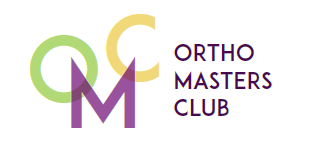Program (19-20 Feb)
Program Schedule
BSCOSO Winter Course was granted 13 European CME credits (ECMEC)
by the European Accreditation Council for Continuing Medical Education (EACCME).
Course director:
Dr. Simonas Grybauskas (Lithuania)
Course speakers:
Dr. Lucas Esteves (Brazil)
Dr. Vanessa Castro (Brazil)
19 February (Monday)
| 07:30-08:15 | Registration |
| 08:15-08:30 | Opening |
| 08:30-09:45 | PART I |
| 09:45-10:15 | Coffee break |
| 10:15-12:00 | PART II |
| 12:00-12:15 | Discussion |
| 12:15-13:30 | Lunch |
| 13:30-15:30 | PART III |
| 15:30-16:00 | Coffee break |
| 16:00-17:45 | PART IV |
| 17:45-18:00 | Discussion |
| 19:30-23:00 | Gala dinner |
20 February (Tuesday)
| 09:00-10:00 | PART V & VI |
| 10:00-10:45 | PART VII |
| 10:45-11:00 | Coffee break |
| 10:00-12:30 | PART VIII |
| 12:30-14:00 | Lunch |
| 14:00-16:00 | PART IX |
| 16:00-16:30 | Coffee break |
| 16:30-17:30 | PART X |
| 17:30-18:00 | Discussion |
| 18:00 | End of meeting |
21 February (Wednesday). Full program available HERE.
| 08:00 – 18:10 | Ortho Masters Club and BSCOSO Community Day |
Program topics
Skeletal and dental deformities – how we treat it from first until last step
I. Diagnosis: knowing the patient to decide the treatment plan with the orthodontist
Face. Facial analysis – what we need to see to make the diagnosis of pathologies
Occlusion. Knowing the limits of stable occlusion in long term
Airway. Helping to decide the treatment plan to correct skeletal deformity
TMJ. What we need to understand about TMJ pathologies and the relation with orthognathic surgery?
Teeth and gums. The consequences in tissues around after the final decision
II. How do we read the face? Deciding the numbers for facial reconstruction …
Position of the maxilla – deciding the numbers for maxilla movements
Position of the mandible – deciding the amount and rotation of mandible
Position of chin – deciding the chin position
Facial symmetry – what do we need to see in asymmetric patients?
Facial width – what is the better relation for width in a face?
III. Airway and Management of TMJ in skeletal deformities
IV. Pre-surgical orthodontics
Orthodontic goals for correction of dental inclinations, Bolton discrepancy, transversal problems, curve of Spee
Surgical goals for correction of long lip, prosthetic spaces, ankyloses, gum problems
Restorative goals for correction of tooth shape problems, Bolton index, prosthetic spaces, restorative problems
V. Virtual planning x conventional
The advantages and disadvantages of virtual and conventional planning
VI. Patient preparation for orthognathic surgery – what do we need to know to better prepare my patient for surgery – how we do it?
Photos
Facial analysis
Head position
Bite registration and tomography
Models
VII. Surgical technique and sequence
BSSO. How and why do we do in this way?
Le Fort I osteotomy. What is essential for maxillary surgery?
Le Fort I segmented osteotomy. What should we care about segmentation of maxilla?
Genioplasty. Many kinds of osteotomies for chin surgery
Osteotomy of the base – when is it necessary?
Chin wing osteotomy. Indications and results
TMJ surgery. Our protocol of TMJ surgery simultaneously with orthognathic surgery
VIII & IX. Discussion of cases with the audience
Class III – diagnosis, treatment plan and results in long follow up
Class II – diagnosis, treatment plan and results in long follow up
Class I – diagnosis, treatment plan and results in long follow up
Asymmetry – diagnosis, treatment plan and results in long follow up
OSAS – diagnosis, treatment plan and results in long follow up
TMD – diagnosis, treatment plan and results in long follow up
X. Post operative care
Nursing assistant – protocol of our team
Elastic bands – Timing protocol
Palatal splint – Why and how do we use it?
Physiotherapy and phonoterapy- protocol of our team
Diet and activities – protocol of our team
Follow up – protocol of our team
What will participants learn from BSCOSO Winter Course?
- To identify the diagnosis of the patient’s pathology and treatment plan;
- To recognize pre-surgical orthodontic goals and know how to see the patient for orthognathic surgery;
- To learn reproductive parameters for determining treatment plan;
- To know how to define the numbers of maxilla movements. Jaw and chin;
- To recognize the advantages and disadvantages of virtual and conventional planning;
- To obtain knowledge of different surgical techniques for skeletal correction;
- To share experiences of cases treated with the audience;
- To know the protocol of follow-up and evolution of patients.
21 February (Wednesday) | Ortho Masters Club and BSCOSO Community Lecture Day (powered by Eurosplint)
* This is an independent event, not a part of the Course. Hence, the CME credits will not be granted. The OMC event is free of charge for all registered BSCOSO Winter Course participants. Full program is available HERE.


 Recommend to a friend
Recommend to a friend Subscribe to news
Subscribe to news What’s new?
What’s new?
